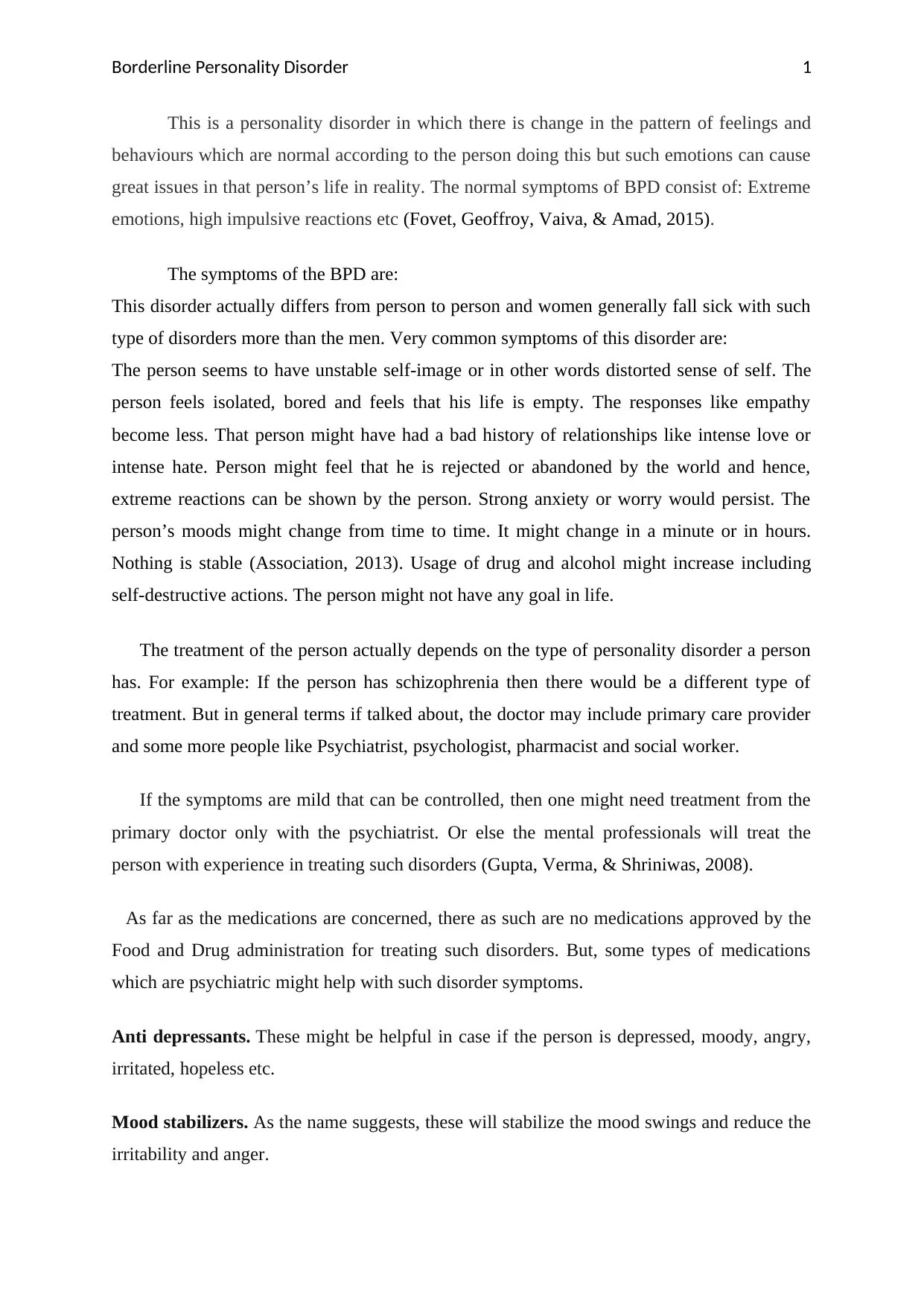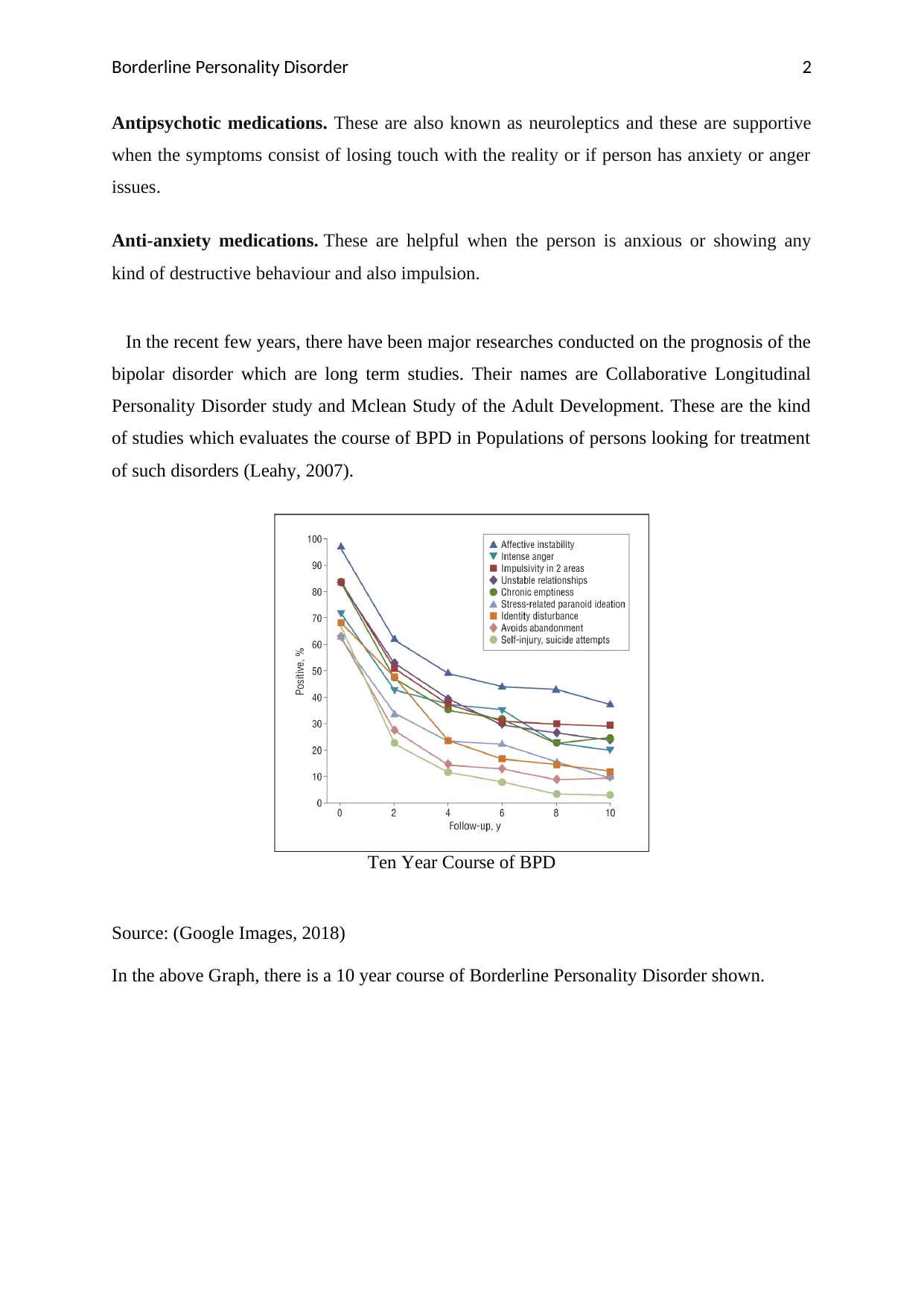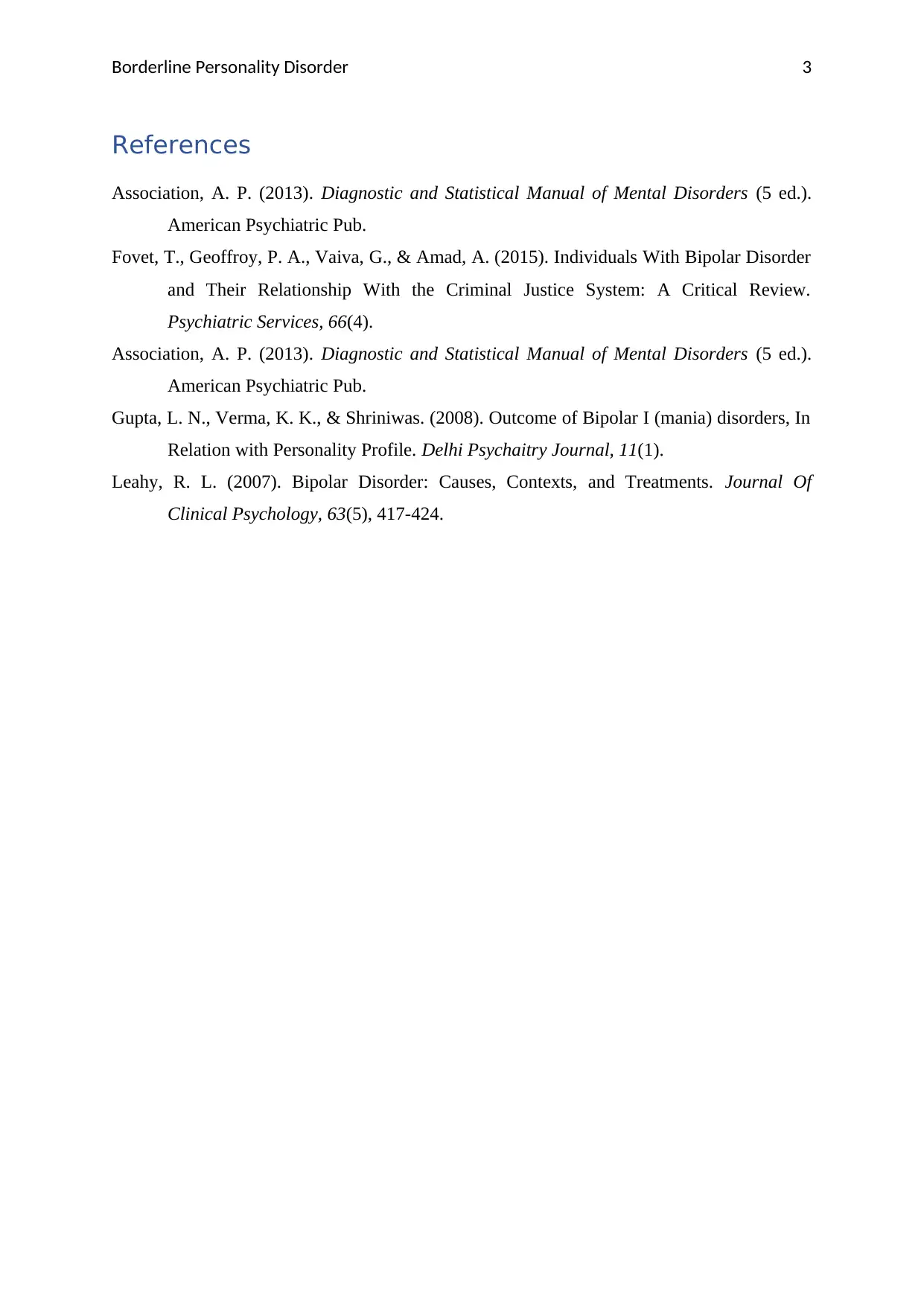An Overview of Borderline Personality Disorder: Symptoms and Prognosis
VerifiedAdded on 2023/06/11
|4
|787
|358
Report
AI Summary
This report provides an overview of Borderline Personality Disorder (BPD), a mental health condition characterized by unstable emotions, distorted self-image, and impulsive behaviors. The report details the common symptoms of BPD, including extreme emotional reactions, feelings of emptiness, and a history of unstable relationships. It also discusses treatment options, such as psychiatric medications like antidepressants, mood stabilizers, and anti-anxiety medications, while highlighting the importance of involving a multidisciplinary team of healthcare professionals. Furthermore, the report references long-term studies on BPD prognosis, like the Collaborative Longitudinal Personality Disorder Study and the McLean Study of Adult Development, and includes a graph illustrating the typical ten-year course of the disorder. Desklib offers this report and many other resources for students.
1 out of 4











![[object Object]](/_next/static/media/star-bottom.7253800d.svg)